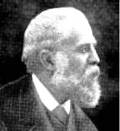
Antoni Gaudí (1852 – 1926)
Spanish Modernist Architect, Catalonia, Spain
Leading the Spanish Modernist movement, Antoni Gaudí has been classified with Gothicism (sometimes called warped Gothicism), Art Nouveau, and Surrealism. He was also influenced by Oriental styles, nature, sculpture, and a desire to go beyond anything that had ever been done before. Defying labels, Antoni Gaudí’s work might be simple called, Gaudí-ism.
While seeking his degree in architecture in Barcelona, Gaudí also studied philosophy, history, and economics. He believed that differences in architecture were caused by society and politics, rather than aesthetics.
Gaudí was granted the title of Architect and presented his first major project, the Mataró Cooperative (a housing project for factory workers), at the Paris World Fair in 1878. Far ahead of his time, only a small portion of the project was actually built, but Gaudí’s name became known and he met Eusebi Güell, who would become a very close friend as well as a patron.
In 1882, Gaudí began work on his greatest project, the Sagrada Familia church, taking over from Francisco de Paula del Villar. For nearly 30 years, Gaudí worked on Sagrada Familia and other projects simultaneously, until 1911, when he decided to devote himself exclusively to the church. During the last year of his life, Gaudí lived in his studio at Sagrada Familia.
Tragically, in June, 1926, Gaudí was run over by a tram. Because he was poorly dressed, he was not recognized and taxi drivers refused to take a “vagabond” to the hospital (they were later fined by the police). Gaudí died five days later, and was buried in the crypt of the building to which he had devoted 44 years of his life, the as-yet unfinished Sagrada Familia.
During Gaudí’s lifetime, official organizations rarely recognized his talent. The City of Barcelona often tried (unsuccessfully) to stop or limit Gaudí’s work because it exceeded city regulations, and the only project the City ever assigned him was that of designing streetlights. He received the Building of the Year award for his least impressive building, Casa Calvet.
Distinguished work:
1882-Present: Sagrada Familia
1886-1890: Palau Güell
1898-1900: Casa Calvet
1900-1914: Parque Güell
1906-1910: Casa Milà